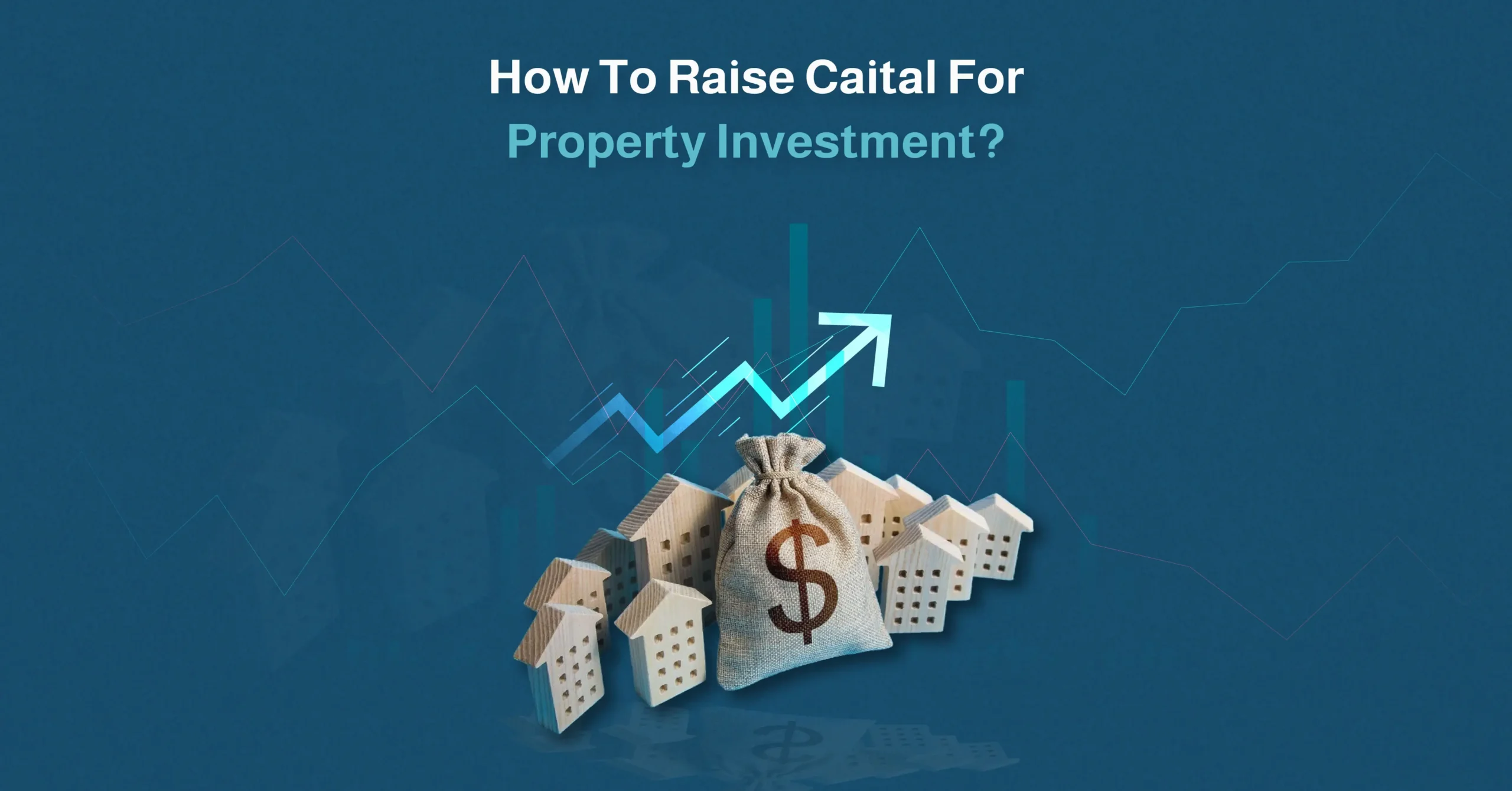We all know that real estate is a good investment, and some of us may have been told to buy a property as soon as we complete our studies. The cost of living crisis may make this more of a challenge in 2025 than it has been in previous years, but that allows investors to get creative with raising capital. So, whether you are looking to buy your first rental unit or expand a growing portfolio, real estate offers stability, passive income, and potential capital growth.
Our guide will help break down the process of raising capital for property investment in practical terms. We will explore funding options and look at building investor relationships, to understand the legalities, all the while creating a strong investment strategy, while providing you with confidence and clarity. The advice offered is tailored to a global investor; the FAQ at the end will provide more Saudi-specific information should you require it.
You can start investing now from the Gamma Asset Investment Platform
Understanding the Basics of How to Raise Capital for Property Investment
We need to just spend a minute or two covering the basics before we can dive into specific funding options. What does raising capital actually means in the context of real estate? Capital is the money an investor would use to purchase, renovate, or develop a property. Some investors use their own savings for this, but many rely on outside funding to grow at a quicker rate while limiting personal financial risk.
We can look at capital in two forms, debt and equity. The first being debt, which would refer to borrowed money that needs to be repaid, usually with interest. This would be a loan from the bank, a mortgage, or even private lending. Equity is a little different as it involves the inclusion of other investors, who would contribute funds in exchange for a share in the property or any profit made from the property. It is not uncommon to see a combination of both debt and equity funding a single project, as it maximizes flexibility.
Only once you have a clear understanding of your investment goals you can look into funding options. Would you like to fund a single property or extend your portfolio? Are you willing to take full control of the property, or are you open to shared ownership? Is fractional ownership an appealing option for you? Once you have answered these questions, you will be closer to figuring out the type of capital that works for you.
Experience level is another consideration, as well as risk tolerance, and available time. New investors may prefer the single funding option as it has fewer moving parts. Whereas, more experienced investors may opt for larger projects with complex financing.
Having an understanding of how to raise capital for real estate investments is not just about the money; it requires making informed decisions, building trust with fellow investors, and choosing the right structure for your investment goals.
Exploring Different Funding Options for Property Investment
When it comes to raising capital, there is no single plan that suits all. The best option depends on your location, financial situation, investment goals, and the risk level you are comfortable with. Let’s explore some of the most common funding routes available to investors around the world.
Traditional Bank loans
This would be familiar to all investors and consists of mortgages and property loans. The loan amount is usually dependent on your income and offers fixed or variable interest rates. You would likely need to provide a deposit and meet certain debt-to-income requirements. Bank loans can be a good way to purchase properties you plan on renting out, provided you have the stability to meet the repayment terms.
Private Investors and Partnerships
Some investors may bring in partners or private funders; this could be in the form of a silent partner, where an investor acts as financial assistance only. Or a joint venture with another investor, where the responsibility is shared equally. These partnerships work best when all the details have been clearly documented in advance, including the profit splits, exit strategies, and responsibilities.
Crowdfunding Platforms
Of the options we will be looking at, this is most certainly the newest and most revolutionary. Technology has changed the game when it comes to how to raise capital for property investment. This is a great option for smaller to first-time investors. Real estate crowdfunding allows multiple people to invest small amounts into a single property or portfolio. By reducing the entry cost, the risk is spread out. The drawback of such a strategy would be the variability of the platform’s fees, structures, and minimum investment requirements, so careful comparison is needed when deciding which platform to use.
Alternative Finance
This is also known as peer-to-peer lending. Various platforms exist to connect borrowers directly with lenders; this process can be faster than dealing with banks. Some investors are also exploring tokenized property shares and digital assets, although these have higher regulatory and market risks. This may be a good option for those who are looking for flexibility or a shorter time frame.
No matter which route you decide to go with, it is vital that you fully understand the costs, risks, and legal implications before you commit. It is easier to grow your investments with a strong funding foundation.
Five Steps to Create a Strategy that Attracts Capital
The best way to attract a financial backer for property investment is to build a strong, well-thought-out plan. Investors, lenders, and crowdfunding platforms all want to see that you have figured out how the investment will work in practice. We will see how to do that in 5 steps.
Step 1. Define your Property Goals
What type of property are you going to be investing in? Is it residential or commercial? Is it a short-term or long-term investment? Is your plan to flip it, rent it out, or just hold on to it? You need to show potential backers what the intention of the purchase is.
Step 2. Choose a Location with Potential
Location, location, location! This is still a very important factor to consider when planning for real estate success. You need to show your understanding of the area’s demand, pricing trends, and risk.
Step 3: Estimate the Costs and Returns
The costs and returns are an important factor as they will prove to be a gauge of whether the property has succeeded or failed as an investment. You need to break down the numbers, which will include the purchase price, renovations, or maintenance costs, expected rental income, or the resale value, along with ongoing expenses. You can present this as a spreadsheet to show you have worked on the figures.
Step 4: Outline a Timeline
What is the projected timeline for this project, including the purchase time, construction or upgrades, tenant onboarding, and lastly, your exit strategy.
Step 5: Prepare a Summary Pitch
Do not let your plan get bogged down with waffle. You want to keep your plan short and sweet, ensuring that the data is easy to read and share. Focus on facts, what is it that makes your investment a good opportunity? A good pitch can be the push that helps you gain the capital or the investment partner you need.
Building Relationships with Investors for Property Investment
A relationship can matter just as much as the numbers, facts, and figures; for some investors, it may even be more important. Trust and communication are of the utmost importance and can be the deciding factor in whether an investor would like to partner with you.
Start with your existing network and reach out to friends, family, colleagues, or acquaintances who trust you. You are more likely to gain capital from people you know when you are first starting out. Don’t be afraid to pursue your goals, discuss them, seek advice, or invite someone to partner on a small project; you won’t receive any assistance if no one knows you need it.
Go where investors are. Attend local real estate meet-ups, industry events, and join online forums and property investment groups. These spaces will offer opportunities to connect with people who are looking to fulfill similar goals and are also looking for deals and partners.
Know how to pitch. A strong investment pitch is clear, focused, and honest. The opportunity should be explained, why it makes sense, and how the investor’s money will be spent. Be clear about timelines and risks, and avoid promising too much. Investors are more likely to partner with someone who is transparent and realistic, rather than someone who sounds too good to be true.
Stay professional. Put your agreement in writing, communicate clearly, and follow through on your communications. Investment circles are not huge; therefore, word spreads quickly, making it vital to build a solid reputation. This will help raise capital in the future.
Learning how to raise capital will naturally mean you learn how to work with people. The better you are at building relationships, the easier it will be to find the right investors for your next deal.
Legal and Financial Considerations When Raising Capital for Property Investment
It is vital that you have an understanding of the legal and financial aspects of raising capital. Regardless of whether you are taking out a loan, working with a private investor, or joining a crowdfunding platform, the arrangement must be clear, compliant, and well-documented.
Begin with the written agreements. If you are going to be accepting money from others, you need to have a contract outlining the specifics, who is contributing what, how profits will be shared, and what happens if the project is delayed or suffers losses. This is designed to protect both you and your investors.
Make sure that you understand your tax obligations. These obligations will vary depending on the country, the structure of your investment, and whether you are holding property as an individual or if it is through a company.
If you need to raise large sums of money, it may trigger some regulatory requirements. Some regions may require you to have licences, disclosures, or a financial advisor’s oversight. If at any point you feel unsure, speak with a qualified professional before you proceed.
The more legally sound your funding arrangement is, the more likely you are to build trust in the real estate community, which goes a long way to building relationships for future ventures.
More topics can be read on the Gamma blog
How Gamma Assets Helps You Raise Capital for Property Investment
Gamma Assets is a property investment app that allows individuals to invest in fractionalized property for as little as 500 SAR. The platform is transparent and easy to use, removing barriers involved in learning how to raise capital for property investment. Gamma offers access to vetted properties and makes it easier for investors to join the real estate market without having to fund the project alone. This is a great option for new or seasoned investors alike.
FAQ
What financing options are available for property investors in Saudi Arabia?
Saudi Investors can access local bank loans, Shariah-compliant financing, and investment platforms like Gamma Assets. Loan eligibility usually depends on income, citizenship, and property type.
How can one leverage Islamic financing methods for real estate investments in the Kingdom?
Popular structures include Ijara (leasing), Murabaha (cost-plus), and Musharakah (joint ventures). These models align with Islamic principles and are offered by Saudi banks.
Are there government programs or incentives to assist in raising capital for property investment?
Most housing supports target citizens, and Vision 2030 has improved investor access. Licencing is required for non-citizens, and the Real Estate General Authority oversees compliance.













